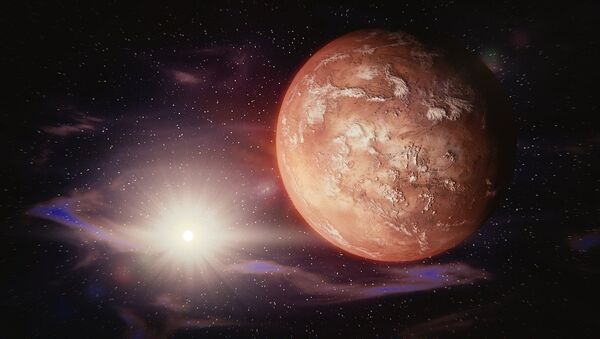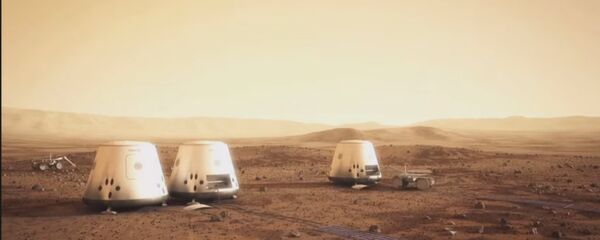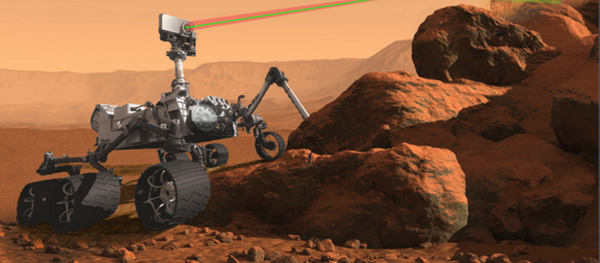The reasons for Mars' mesmeric hold on the human imagination are obvious. Its surface conditions make it the most hospitable planet for humans in the Solar System bar Earth. The planet is similar to Earth in many ways, too — a Martian day is 24 hours, 39 minutes and 35.244 seconds, Mars' surface area is 28.4% of Earth's (only slightly less than the amount of dry land on Earth), and the planet's similar axial tilt means it has seasons much like Earth's — although they are nearly twice as long, as a Martian year is about 1.88 Earth years.

Moreover, Mars ranks just behind Venus as the easiest planet to reach from Earth — although Venus' extreme conditions (such as a surface temperature of 462 °C; 863 °F) likely preclude it from ever hosting human life.
As technology has advanced, and anxieties about the future prospects for humanity on Earth have increased, the race for space colonization has gained momentum. Many astronomers, scientists and businesses have for years worked to see if colonization missions to the planet would ever succeed. Despite its similarities to Earth, the planet is still inimical to human life, with sub-Antarctic temperatures all year round, an atmosphere is composed of roughly 95 percent carbon dioxide, 0.13 percent oxygen, and minor traces of water, nitrogen oxide, neon, hydrogen-deuterium-oxygen, krypton, and xenon.
Frozen water almost certainly exists under the surface, which could be an invaluable resource for colonies — although visitors would still have to live with high levels of radiation, as well as constant, violent iron dust storms.
Tune in to the Planetary Science: Vision 2050 workshop LIVE at: https://t.co/h2RyVJjaD3 https://t.co/i9PIhPxDXZ
— NASA360 (@NASA360) March 1, 2017
However, NASA has outlined a way of making Mars much more habitable — and in the process taken a significant step towards allowing human exploration of the planet. Presented at the Planetary Science Vision 2050 Workshop, the proposal would see the deployment of a magnetic shield around the planet that could act as a barrier to radiation, and reduce the need for extreme protective equipment. It relies on the theory that over four billion years ago, the planet's magnetic field suddenly vanished — over the course of the next 500 million years, Mars mutated from a warmer, wetter environment to the cold, uninhabitable husk seen today.
A Future Mars Environment For Science And Exploration (using a magnetic shield on L2, PDF paper) https://t.co/HnNp4BxR1w #SpaceX
— dangermouses (@dangermouse_77) March 7, 2017
Without returning some kind of magnetic field to Mars, this situation will not change, and indeed could worsen. NASA Planetary Science Division Director Dr. Jim Green said that by placing a magnetic dipole shield at the Mars L1 Lagrange Point, a man-made magnetosphere could cradle the entire planet.
The team says previous tests in lab conditions suggest inflatable structures could generate a magnetic dipole field at a level of perhaps one or two Tesla, protecting against both radiation and solar winds. Such a field could even result in Mars' atmosphere thickening over time, creating a greenhouse effect, which would increase the planet's surface temperature by up to four degrees, and melt northern polar ice caps — restoring Mars' oceans in the process.
These improved conditions, Dr. Green argued, would allow for human explorers to study the planet in much greater detail, and help determine its habitability, since many of the elements that pointed towards Mars being habitable in the past would slowly seep back into and onto the planet's environment.
Those eager to buy their ticket to a liveable Mars may have to be patient. Dr. Ruth Bamford from Rutherford Appleton Laboratory and Oxford University, who attended the Workshop, acknowledges the idea sounds "fanciful" — the proposal formed part of a "thought experiment" in any event. Although, she adds that the underlying physics are "entirely sound."
"We're trying to inspire people to imagine what we would need to do to colonize Mars. We're seeing how computer simulations can cope with a challenge beyond their usual abilities to perform. We will need to conduct extensive computer simulations, and constantly refine them, to produce accurate assessments of how long the changes would take — and how much the project would cost. It will be immensely expensive, a huge investment. Although if we as a species plan to inhabit Mars, we need to dedicate vast resources to that project anyway," Dr. Bamford told Sputnik.
By the time mankind launch the magnetic field — which won't happen before 2050 at least — humans will, Dr. Bamford suggests, already be visiting Mars regularly, with crews establishing infrastructure and building colonies. There'll be large vessels traveling between the two planets, and scientists could assemble the field in transit.
"We're developing fusion on Earth, which means a lot of things will change in the next 20-30 years. The possibility of such projects will become much more credible. If you look backwards, 50 years ago, people's imaginations were leaping, and coming up with what we see today. Mars is a place we can envisage humanity living on. It'll never be quite like Earth, but it's the planet we'd most likely be able to live on," Dr. Bamford concluded.





